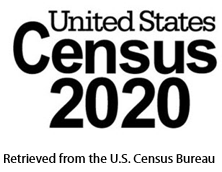Every 10 years the U.S. Census Bureau collects data from the residents of the United States through the national  census. The census is pivotal to understanding the composition of the country, but it also plays a large role in federal funding levels of major programs. In fact, the U.S. Census Bureau reported that education programs are some of the biggest to use census data to determine funding. For example, the Pell Grant program utilizes census data and was allotted $29.8 billion dollars in 2015.
census. The census is pivotal to understanding the composition of the country, but it also plays a large role in federal funding levels of major programs. In fact, the U.S. Census Bureau reported that education programs are some of the biggest to use census data to determine funding. For example, the Pell Grant program utilizes census data and was allotted $29.8 billion dollars in 2015.
Additionally, the annual American Community Survey (ACS) relies on census data and plays a significant role in distributing funding to education programs. Census data, and correlated data from the ACS, decide how much funding should be allocated to different areas of education research, as well as how much money is needed for a variety of education programs. It is estimated that at least $47 billion in federal education funding is affected by census and ACS results.
According to the Leadership Conference Education Fund, Georgetown Law Center on Poverty and Inequality and Economic Security and Opportunity Initiative, data from the census and ACS impacts education research and programs in ways such as:
- How much federal funding was directed toward Career Technical Education (CTE) programs through the Carl D. Perkins Career and Technical Education Act (Perkins IV);
- States rely on ACS data to finalize funding for local adult education programs;
- The census and ACS provide data on educational attainment related to labor market demand; and
- ACS data gives insight into inequities in higher education enrollment.
Because the census is the only nation-wide survey that attempts to collect comprehensive data on each resident, preparation for the 2020 Census has been focused on how to reach every individual and increase response rates. For the first time, the 2020 Census will have the option to fill out and submit entirely online. In addition, the Integrated Partnership and Communications division pays special attention to populations that are typically under-represented in the census.
Meredith Hills, Policy Associate
